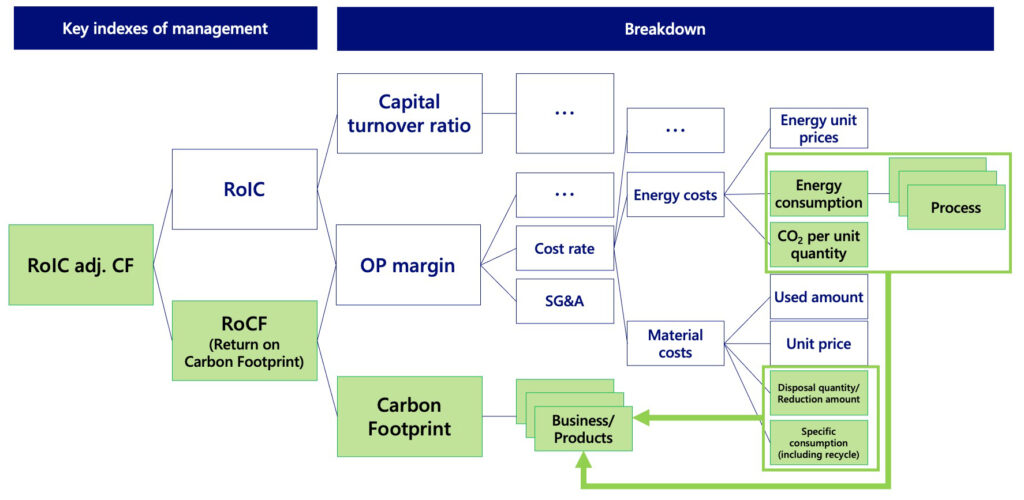ASIA ELECTRONICS INDUSTRYYOUR WINDOW TO SMART MANUFACTURING
Decarbonization Achieves Sustainable Smart Factories
Amid the growing global trends to reduce carbon emissions, more companies are becoming more transparent of the carbon footprints of their products. In addition, several countries have also implemented political pressures to implement stricter disclosure of carbon footprints of specific products.
For example, countries in Europe, as well as in Japan, more governments continue to pass laws for more transparent disclosures of carbon footprints among battery manufacturers. For one, companies such as BASF recently said it has been keenly calculating the carbon footprints of their respective products.
Carbon Footprints Disclosure
Currently, disclosure of carbon footprints has been an important issue in the industry. However, what will happen as the result of disclosure? Likely, companies will have to compete in terms of carbon footprint disclosure. For example, when there are two products with the same performance, a product with lower carbon footprint will likely get patronage.
In fact, carbon footprints of batteries for electric vehicles (EVs) will become basis for industry certifications. Furthermore, Taskforce on Nature-related Financial Disclosures (TNFD) currently under consideration will require improvements of companies’ efforts from the viewpoint of biodiversity. Companies will be required to evaluate and improve not only carbon footprints but also the use of water resources and other resources.
Effects on Factories, Supply Chains
If product carbon footprint disclosures progresses, managements of factories and supply chains will likely change as well. For that reason, it will become necessary for companies to enhance productivity not only in terms of manufacturing costs but also carbon neutrality. Eventually, an index like Return on Carbon Footprint (RoCF) will become prevalent in factories, aside from Return on Invested Capital (ROIC).
To improve RoCF, factories need to reduce carbon footprints, but also to contribute in terms of emissions credits and revenue enhancement, such as tax breaks. Furthermore, there is a high possibility that contribution of the entire supply chain will be evaluated, in addition to contribution of the company itself. Changes in supply chain management (SCM) are necessary. In the medium to long term, RoCF will incorporate a wide range of sustainability indexes, such as measures for biodiversity, in addition to carbon footprints.

Necessary Three Steps
Looking at examples at non-manufacturing industries as well, changes are occurring in three steps. First, is the disclosure of carbon footprints. Main initiatives in this stage are the calculation by specific consumption with quantity using already available information technology (IT) services. In addition, the determination of allocation rule for the common part.
Next, is the improvement of carbon footprints using energies and materials with low specific consumption, such as renewable energy. Here, investments for the use of biomaterials and the shift to renewable energy and development activities are necessary. In many cases, it is necessary to carry out steps 1 and 2 simultaneously. These are already underway in various industries. Today, these activities are common practice already.
Meanwhile, step 3 dwells on originality and improvement of specific consumption. This involves suppliers using data inside the factory.
For example, AEON CO., LTD., a Japanese retail company, is beginning to construct a system to calculate the amount of greenhouse gas emissions of its entire supply chain, including several hundred thousand suppliers. Walmart, also a retail company, has begun to implement a program to provide financing to its customers that implement environment-friendly programs in collaboration with HSBC and CDP.
These efforts have already been taken in the downstream of the manufacturing industry, and these moves will spread to the manufacturing industry in not-so-distant future.

In Step 3, a foundation to analyze data obtained from sensors and internet of things (IoT) devices in factories based on sustainability is necessary. Many companies accumulate data in SCM, procurement management, distributed control systems (DCS), and manufacturing execution system (MES). However, from sustainability viewpoint, their design is not merely about carbon footprint disclosure.
Role of Automation
Hence, it is necessary to fix excess and deficiency of data from the viewpoint of decarbonization and sustainability factories. Furthermore, it is also important to introduce an operating process that analyzes those data regularly and lead to the improvement of operation. In addition, a mechanism to deploy those standard operations to different factories, businesses, and suppliers is also necessary.
In terms of the disclosure of CO2 emissions, even leading companies with sales of over ¥1 trillion are using a different system for each factory. Also, the purpose of the data their data are not for the disclosure of CO2 emissions. For that reason, they are managing to prepare data by cutting and pasting various data sources.
Reduction of carbon footprints leads to competitiveness. Nonetheless, using much manhour for grasping the reduction of carbon footprints is like putting the cart before the horse. For example, the measurement of original specific consumption is very important for competitiveness from the viewpoint of decarbonization. However, Japanese companies are using considerable manhour to update their original specific consumption. Hence, an automation mechanism to solve these problems is necessary.
Efficient, Competitive Mechanisms
From the viewpoint of involving suppliers, discussions on data linkage bases, such as GAIA-X, have already been advancing. However, data linkage loses its effectiveness unless individual companies are grasping data on CO2 emissions and environmental loads correctly. Hence, it is necessary that individual companies introduce efficient and competitive mechanisms and deploy them to their suppliers.
The decarbonization trend forces companies to increase investments and costs. Nonetheless, changes in business and system to lead them to competitiveness will become key elements in the next-generation smart factories. Right now, considerations are necessary.
GAIA-X is a framework that is targeting the construction of a data infrastructure integrating communication infrastructure, equipment; collection and usage of industrial and individual data; and digital platform existing in Europe.
What Is Carbon Footprint?
A carbon footprint is the total greenhouse gas emissions arising in the entire lifecycle of goods and services from the procurement of materials, production and distribution to disposal and recycling converted into carbon dioxide (CO2).
The birthplace of carbon footprint is England. The British government created a standard for carbon footprint called PAS 2050, and multiple companies started demonstration experiments. In 2007, carbon footprint labels were applied to potato chips, smoothies, and shampoos for the first time in the world.
Then, the idea of carbon footprint spread to the United States, Japan, Korea, and countries in Europe and Asia, including Thailand. These countries begun to create original carbon footprint standards. Amid the situation, discussions on the necessity of a unified standard for trading started. In 2013, an international technical specification, ISO/TS14067, was issued.
Note:
The second part of this article series by Nomura Research Institute (NRI) dwells on the role of carbon footprint management to achieve environment-friendly smart factories and enhance competitiveness.

About This Article:
The author is Sakuto GODA, Group Manager, Mobility Service Group, Global Manufacturing Industry Consulting Dept., Nomura Research Institute, Ltd.




